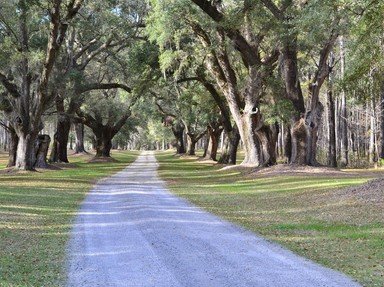Quiz Answer Key and Fun Facts
1. What two rivers flank the Charleston peninsula?
2. Congaree National Park is a fabulous place to visit. What marvel would one NOT expect to see upon visiting?
3. Spanish moss hanging from live oaks is a familiar sight in coastal South Carolina. It isn't a moss and isn't from Spain. Oddly, it is closely related to what plant?
4. At the Battle of Sullivan's Island in June 1776, SC patriots fighting from Ft. Moultrie rebuffed the British in their attempt to take Charleston. Palmetto trees, used to build the fort, gave what unique additional protection?
5. What is the climate of South Carolina?
6. South Carolina is close in size to what country?
7. Many of SC's geographical features have unique names, frequently mispronounced by folks from "away". Winyah Bay, the Pee Dee, Santee, Ashepoo, Waccamaw Rivers and Edisto and Kiawah Islands are just a few examples. What is the commonality?
8. South Carolina is triangular in shape and has six official geographic zones: the Blue Ridge Mountains, Piedmont, Sandhills, Inner And Outer Coastal Plains and the Coastal Zone. Most people refer to only four regions. Which is NOT a name for one of these four regions?
9. The Gullah live in the south coastal region. They have a rich cultural heritage and some still speak a variety of English known as Gullah. Who were their ancestors?
10. Historically South Carolina has been an agricultural state. One in particular made fantastic fortunes for planters? Which one?
Source: Author
Mowwow
This quiz was reviewed by FunTrivia editor
Tizzabelle before going online.
Any errors found in FunTrivia content are routinely corrected through our feedback system.


